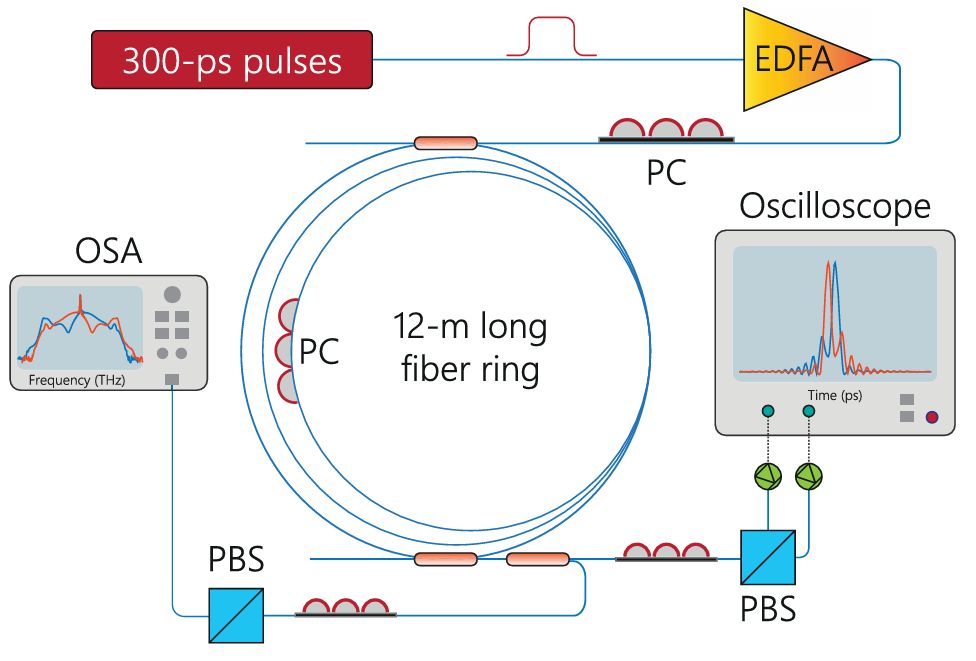Horizontal Symmetry Breaking in Photonic Devices
Symmetry breaking is a fundamental phenomenon in physics at the base of many important phenomena such as the Higgs boson in particle physics, convection cells in fluids and several phases of matter, like crystals, magnets, liquid crystals and conventional superconductors. It is however very difficult to maintain these systems in perfectly symmetric conditions to be able then to observe the spontaneous breaking of their symmetry properties. Photonic devices and in particular experiments of light with two polarization components propagating in micro-resonators or fiber rings, can produce unprecedented and extraordinary accuracy in creating perfectly symmetric states and in observing spontaneous symmetry breakings. In an international collaboration between Gian-Luca Oppo at Strathclyde and research groups in Auckland (New Zealand), Dijon (France), Erlangen (Germany) and Wuhan (China), a new kind of spontaneous symmetry breaking phenomenon leading to chiral (left or right handed) symmetry broken polarization solitons along the resonator axis of light propagation has been discovered and controlled.


The schematic of the experiment performed in Auckland is shown in the first figure with the polarization soliton represented as the trace of the output oscilloscope. The experimental measurements are compared with numerical simulations in the two panels (a) and (b) of the second figure. Solid lines correspond to experimental data and dashed lines to numerical simulations. In the circular polarization basis the new soliton shows a horizontal split between a peak in the left handed polarization component (in red) and a peak with the right handed polarization component (in blue) (see panel (a)). In the linear polarization basis the new soliton shows a large peak for the x component and a topological dark soliton with a zero intensity point in the middle for the y component (see panel (b)). The advantage of this new horizontally symmetry broken structure is the production of dual frequency comb spectra that can switch chiral hand at the click of a button from red-blue peaks (left hand) to blue-red peaks (right hand) with applications in optical metrology, frequency-chain generation, optical atomic clocks, high-precision spectroscopy, ultrafast communications, astronomy and more precise GPS technology. The results were presented in a paper titled ‘Polarization Faticons: Chiral Localized Structures in Self-Defocusing Kerr Resonators’ in Physical Review Letters 135, 063803 (2025).
September 2025